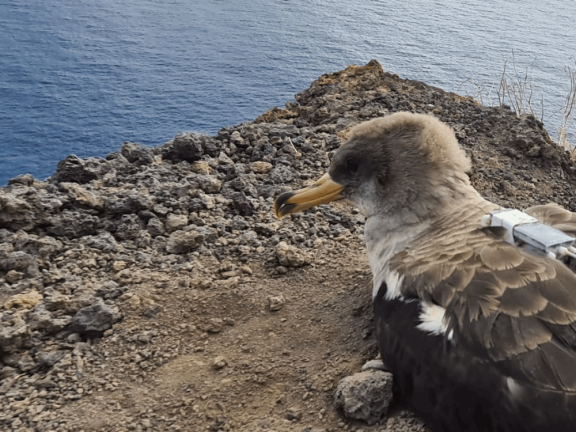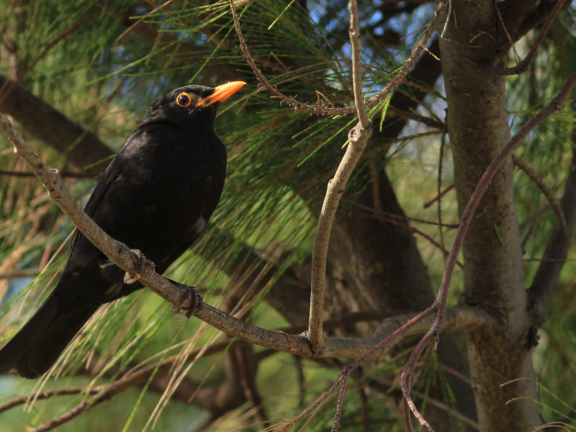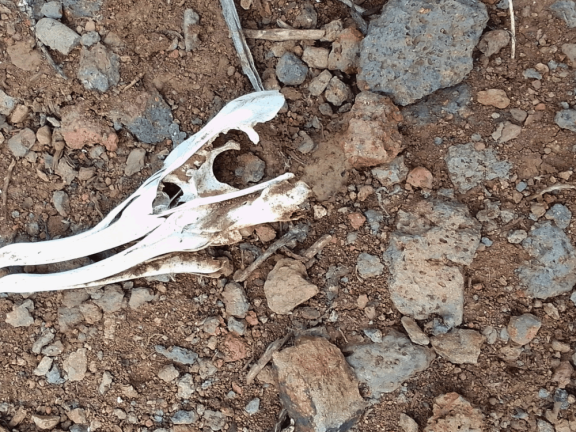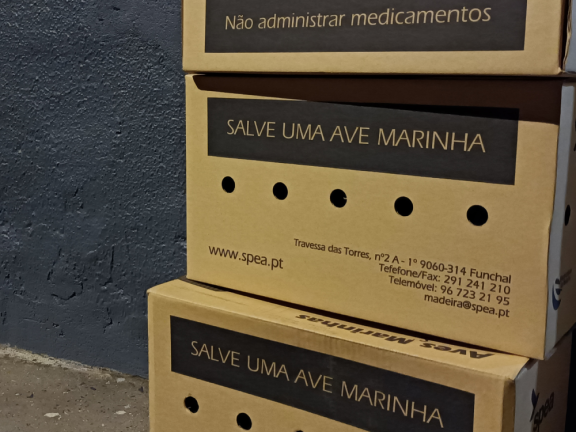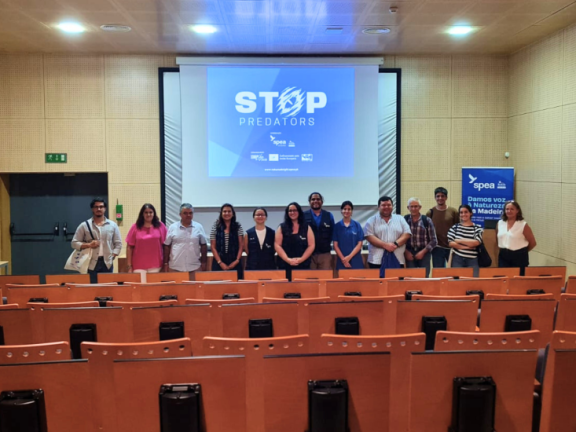The Azores archipelago is one of the most important places in the Atlantic for seabird nesting. Unique species find refuge here, many of them with a conservation status of “Vulnerable” or “Endangered,” which spend most of their lives on the open sea and only return to land to reproduce.
As part of the LIFE Natura@night project, whose mission is to reduce light pollution in the Macaronesia archipelagos and mitigate its impact on nocturnal species, the Government of the Azores, through the Regional Directorate for Maritime Policy (DRPM), launched the “SOS Seabirds” Campaign, a conservation action aimed at protecting the various seabirds that nest in the Azores and are heavily affected by light pollution.
Why was this campaign created?
Light pollution is one of the main threats to seabirds, especially during the phase when juveniles leave their nests. Sensitive to artificial light, these birds are easily disoriented, colliding with buildings, vehicles, or power poles, leaving them vulnerable to being run over, preyed upon, and even death from exhaustion or dehydration.
The SOS Cagarro Campaign, now in its third decade and well known to all, involves thousands of people every year in the rescue of juveniles of this emblematic species. Based on this important experience, the “SOS Seabirds” campaign has now been created as a complementary initiative that aims to extend protection to other seabirds also affected by light pollution. These are:
- Alma-negra (Bulweria bulwerii)
- Estapagado (Puffinus puffinus)
- Frulho (Puffinus lherminieri)
- Painho-da-madeira (Hydrobates castro)
- Painho-de-monteiro (Hydrobates monteroi)
What does this campaign consist of?
The “SOS Seabirds” Campaign takes place throughout the Azores archipelago, involving the community in rescuing disoriented seabirds, thereby raising public awareness of the impact of light pollution on these animals. This initiative takes place during the periods when the young birds leave their nests, so it varies depending on the species:
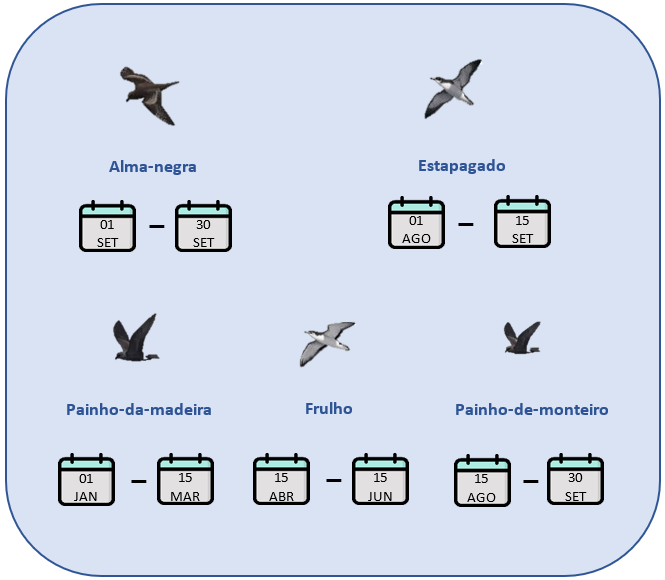
In addition to directly rescuing birds, the “SOS Seabirds” campaign is strongly committed to raising awareness and promoting environmental education. The campaign also promotes community-oriented actions and provides posters, educational guides, videos, fact sheets, games, and other informational resources on its website, which help to increase knowledge about the problem of light pollution and the measures that each person can take to reduce it.
How can you help?
During these critical times, public involvement is essential.
- Be vigilant during the periods when juveniles leave the nest
- Alert family and friends to the dangers of light pollution and illegal trapping
- Share information and contribute to the protection of the biodiversity of the species in the archipelago
When encountering a disoriented seabird, any citizen can take the following actions:
- Approach the animal calmly
- Pick it up carefully, using a towel or jacket
- Place it in a cardboard box from the S.O.S. Seabirds Campaign
- Submit the online form, accessible from the QR code found on the box or on the official website: SOS Aves Marinhas – Direção Regional de Políticas Marítimas – Portal
- If in doubt, please contact the Environment SOS Hotline: (+351) 800 292 800
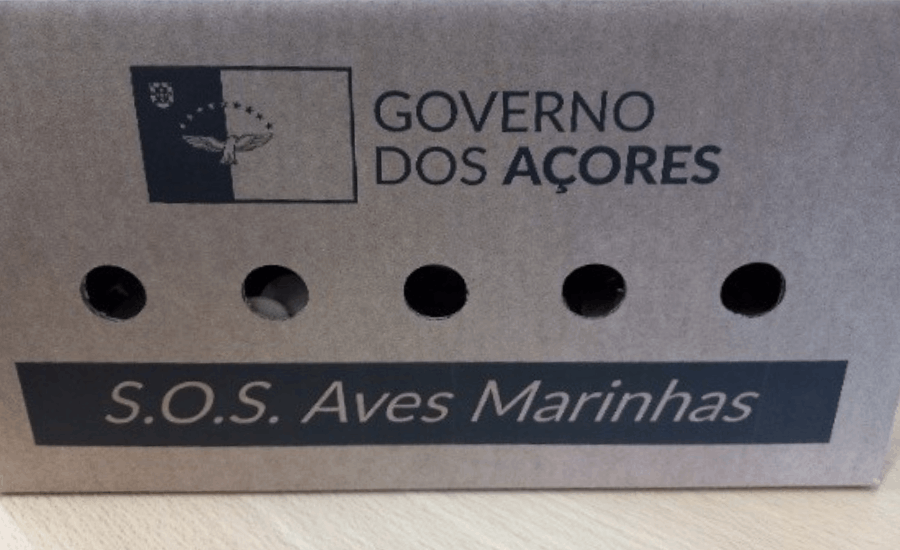
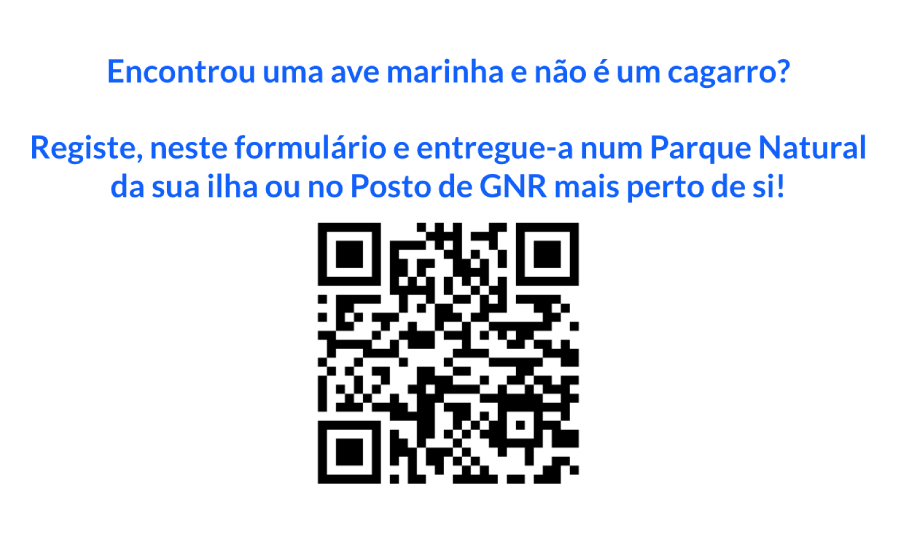
SOS Seabirds website
The SOS Seabirds Campaign has a website where you can learn more about the initiative, the species affected, the collection points available, and access various awareness-raising materials. To find out more and discover how to participate, visit the project website:
